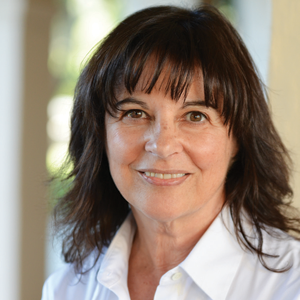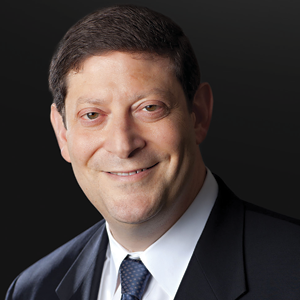Celebrate Our Pioneering Alumni
Reunion Weekend is June 1-4
In labs around the world, Columbia alumni are developing scientific and technological innovations that are having profound effects on our lives. They are deepening our understanding of DNA and improving cancer therapy, increasing the speed at which data travels, and expanding the reach of digital media, among many other advances across a vast range of industries. To celebrate some of the talented and industrious pioneers behind today’s innovations, the Columbia Engineering Alumni Association presents three prestigious awards each Reunion Weekend to science and engineering superstars affiliated with the University: the Michael Pupin Medal, the Thomas Egleston Medal, and the Samuel Johnson Medal. These are the 2017 winners of the Pupin and Egleston Medals. Read about the Johnson Medal winner in the next article.
Changing How We Understand DNA: Jacqueline K. Barton | Pupin Medal
 The Michael Pupin Medal for Service to the Nation in Science, Technology, or Engineering recognizes individuals whose lasting and broad contributions to society reach beyond the candidate’s professional field. This year, Jacqueline K. Barton of the California Institute of Technology is being awarded the Pupin Medal for her crossdisciplinary research related to the chemical and physical properties of DNA. In addition to her groundbreaking research in the laboratory, Barton strives to prop up those around her, acting as mentor to budding young scientists and junior faculty.
The Michael Pupin Medal for Service to the Nation in Science, Technology, or Engineering recognizes individuals whose lasting and broad contributions to society reach beyond the candidate’s professional field. This year, Jacqueline K. Barton of the California Institute of Technology is being awarded the Pupin Medal for her crossdisciplinary research related to the chemical and physical properties of DNA. In addition to her groundbreaking research in the laboratory, Barton strives to prop up those around her, acting as mentor to budding young scientists and junior faculty.
From her discoveries about the fundamental nature of DNA to electron transport and its implications for biological processes, Barton has made scientific contributions that are changing how we understand chemistry. Her research cuts across the disciplines of biology, chemistry, and physics and has contributed to new diagnostic tools and novel chemotherapeutics for cancer treatment.
In 2011, Barton was recognized at the highest level in the United States when she was awarded the National Medal of Science by President Obama for “discovery of a new property of the DNA helix, long-range electron transfer, and for showing that electron transfer depends upon stacking of the base pairs and DNA dynamics.” She also is a recipient of a MacArthur Foundation Fellowship, better known as the “genius grant,” and the Priestley Medal, the highest honor conferred by the American Chemical Society, in addition to numerous other prestigious accolades.
A native New Yorker, Barton developed a strong interest in mathematics and science while attending the Riverdale Country School. Although the school was separated by gender, Barton’s affinity for the hard sciences was so evident that she was permitted to take calculus on the boys’ campus. Her academic excellence led her to Barnard College, where she graduated summa cum laude with a degree in chemistry in 1974. She was then able to delve deeper into chemistry at Columbia, where she completed her PhD in 1978.
After working at Bell Laboratories, Yale University, and Hunter College, Barton returned to Columbia as an assistant professor in 1982 and became a full professor in 1986. She is currently the John G. Kirkwood and Arthur A. Noyes Professor and the Norman Davidson Leadership Chair of the Division of Chemistry and Chemical Engineering at the California Institute of Technology.
Twisting Light to Speed Up Data: Alan Willner | Egleston Medal
 Alan Willner of the University of Southern California is the recipient of the Thomas Egleston Medal for Distinguished Engineering Achievement. Willner’s advances in the field of electrical engineering have made him a foremost scholar in the areas of optics, photonics, and high-speed optical networks. This medal recognizes his achievements as a transformational scientist who has significantly advanced his field of work.
Alan Willner of the University of Southern California is the recipient of the Thomas Egleston Medal for Distinguished Engineering Achievement. Willner’s advances in the field of electrical engineering have made him a foremost scholar in the areas of optics, photonics, and high-speed optical networks. This medal recognizes his achievements as a transformational scientist who has significantly advanced his field of work.
Using his knowledge of optics and photonics, Willner is developing ways for data to move even faster as it streams through high-speed optical networks around the globe. One of his recent projects demonstrated that multiple twisted beams of light could be combined to transmit data thousands of times faster than consumer broadband Internet connections.
Willner earned his BA from Yeshiva University in 1982 and enrolled at Columbia Engineering with the intent of using his master’s degree to pursue a career as a patent lawyer. Under the guidance of Professor Richard Osgood, he changed the scope of his academic focus and applied to the PhD program at Columbia Engineering instead. In 1985, Willner won the Armstrong Memorial Award, given to the highestranking MS student in the Department of Electrical Engineering. He earned his PhD in 1988.
After he completed his doctoral work in laser-controlled photochemical etching of semiconductors for electrooptical devices, Willner went to work for AT&T Bell Laboratories and then Bell Communications Research. He later co-founded Phaethon Communications, whose technology was acquired by Teraxion and is used in telecommunication systems worldwide. Willner has been a visiting professor at Columbia University, the University College London, and the Weizmann Institute of Science. In 1992, he joined the faculty at the University of Southern California, where he is the Steven and Kathryn Sample Chaired Professor of Engineering in the Ming Hsieh Department of Electrical Engineering at the Viterbi School of Engineering.
Because of his pioneering research and professional leadership, Willner is a member of the U.S. Army Science Board and has served on many scientific advisory boards. Last year, he was inducted into the National Academy of Engineering, a prestigious honor. He also is a fellow of the UK Royal Academy of Engineering; the American Association for the Advancement of Science; the IEEE; the National Academy of Inventors; the Optical Society (OSA); and SPIE, the international society for optics and photonics.
